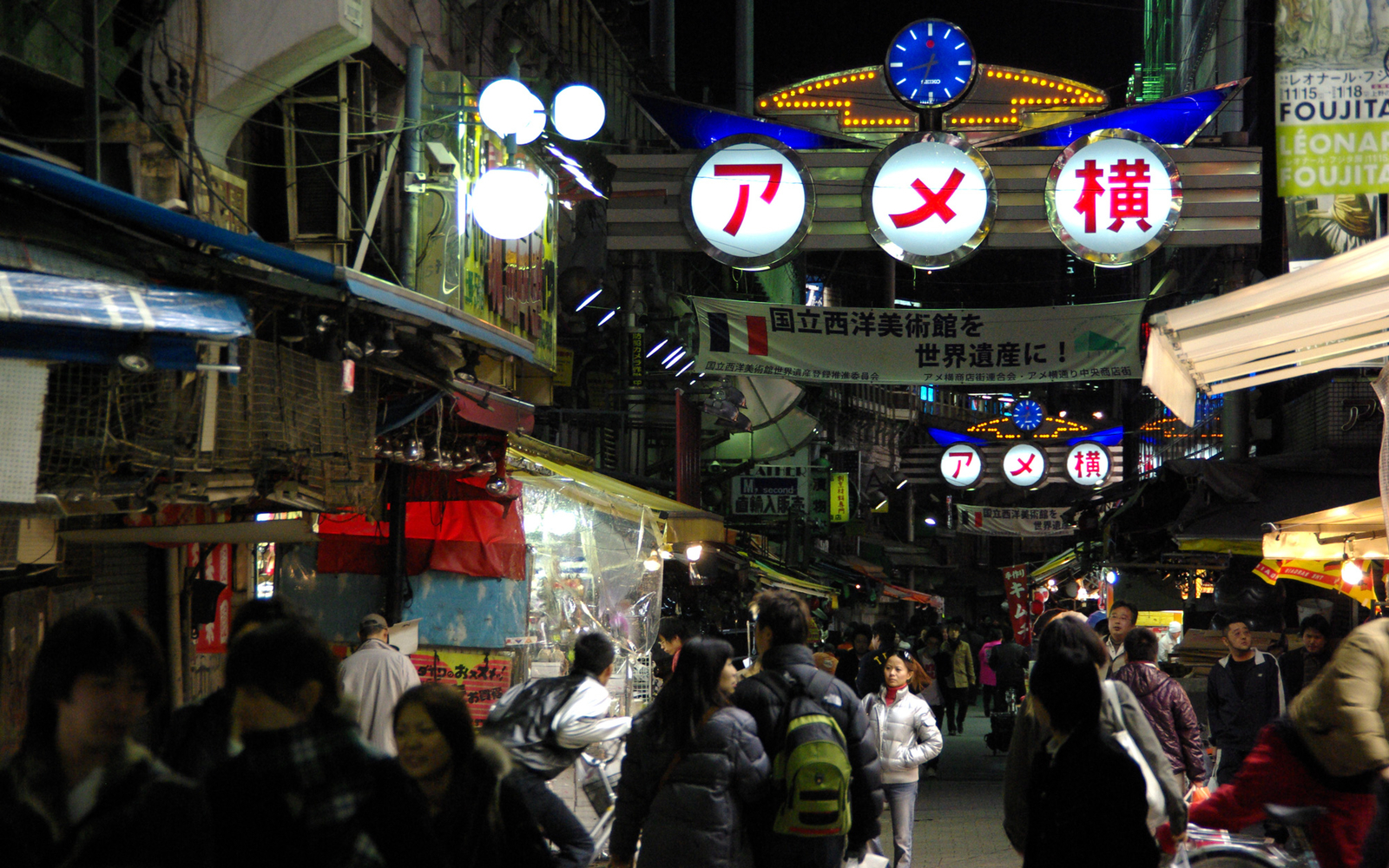
The city is a delightful labyrinth with an endless number of secret streets to wander—here are a few of our favorites.
It should come as no surprise that Tokyo has plenty of nooks and crannies ready for discovery. The layout of the metropolis, with its interlacing walkable neighborhoods overlaid with a formidable and extensive transportation system, means that it's easy to find countless little alcoves stowed around the city, just waiting for a wrong turn or a fortuitous detour. Often called yokocho, meaning alley or lane, or shotengai, meaning shopping street, these narrow pedestrian walkways are perfect for an exploratory ramble.
Many people have heard of Golden Gai, the seamy rabbits warren of tiny bars in Shinjuku's red light district. Another Shinjuku favorite, with perhaps a more welcoming atmosphere, is Omoide Yokocho (Memory Lane), a few narrow streets lined with lively bars and eateries, many with only half a dozen seats.
In the Shibuya area, Nonbei Yokocho (Drunkard's Alley) runs next to the train tracks and is marked by a string of faded, cheerful lanterns at the entrance to a passageway holding a double handful of watering holes. And the delightfully named Harmonica Alley, in the Kichijoji neighborhood, is a maze-like concentration of shops so small that they resemble the close-grouped holes of a mouth harp, with both old-fashioned shopping during the day and drinking establishments by night.
You can't miss Omotesando in Harajuku, the high fashion street boasting the likes of Prada and Gucci; the parallel teenybopper Takeshita Street is also easily spotted when exiting Harajuku Station. If you follow Takeshita to its end and cross the street though, you'll find Harajuku Street, which is quieter, less gaudy, and home to more interesting shops—including lots of thrift stores and indie designers.
On the opposite side of Omotesando you can also visit Cat Street, another fashionable avenue with excellent strolling potential. Thrift store lovers will also want to visit Look Street in Koenji, a lower-key but still painfully cool neighborhood.
To get a feel for the daily shopping habits of the locals, checking out a shotengai is essential. There are yokocho and shotengai in nearly every neighborhood, usually noted with some kind of gate or sign. These streets have a little of everything, from cafes and fishmongers to folk crafts and shoe repair. This is where you can buy everyday tea, fruit, and get your umbrellas fixed and keys made. Shops tend to be mom-and-pop, often several generations old.
Some great picks are Yanaka Ginza, which boasts an Edo-era flavor; the lively linked Sun Mall, Nakano Broadway; and Ai Road in Nakano, with a bustling mix of older and younger clientele. And of course, Ameya Yokocho (pictured) in Ueno has a hectic, eclectic market vibe leftover from the postwar period. These may be our initial picks, but know there are many more to be found, just around the next corner.